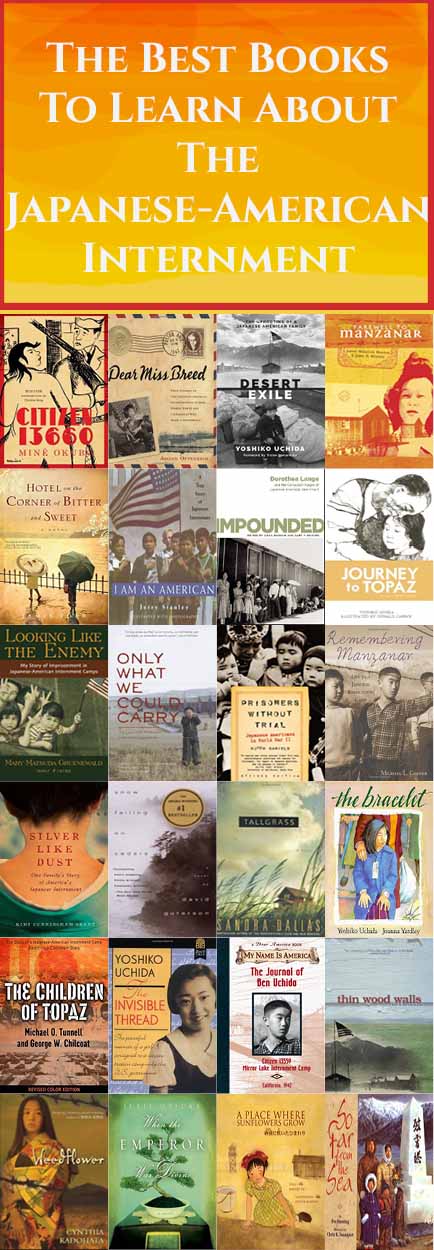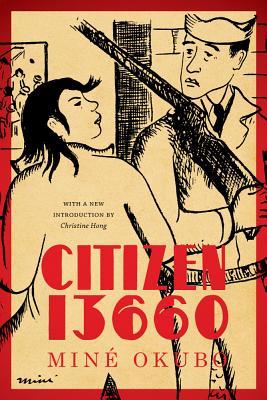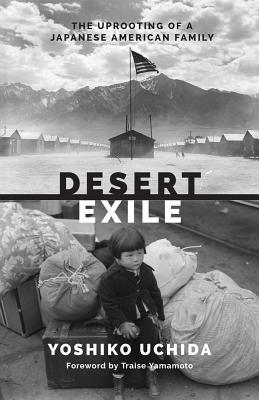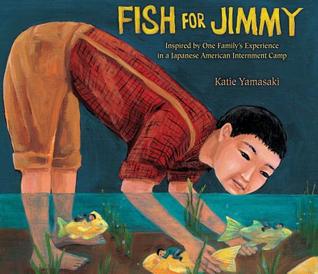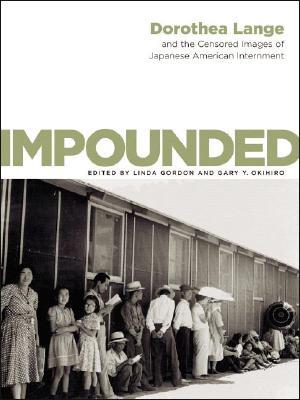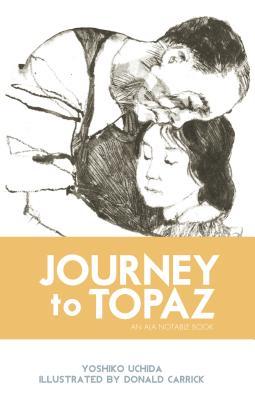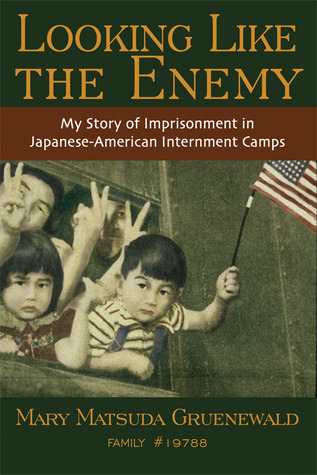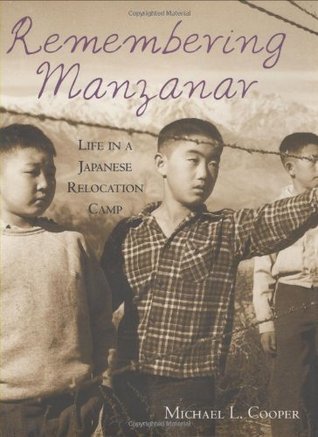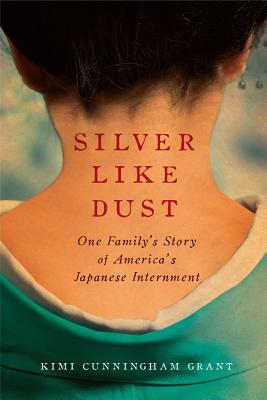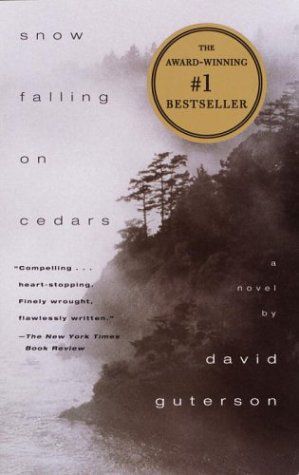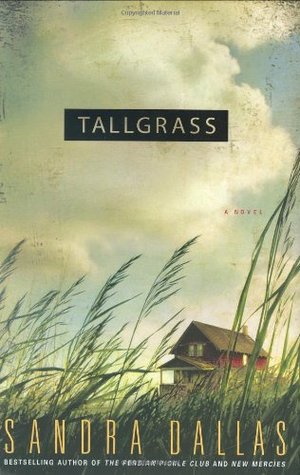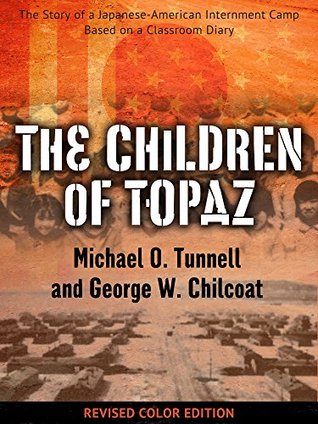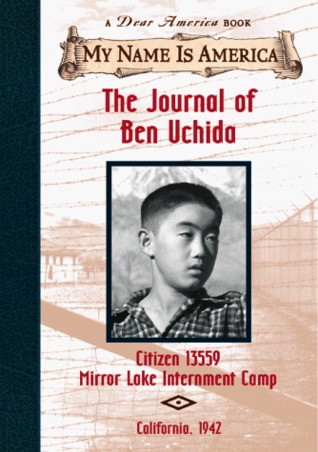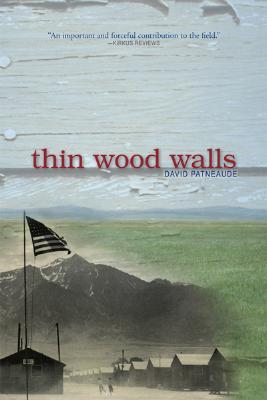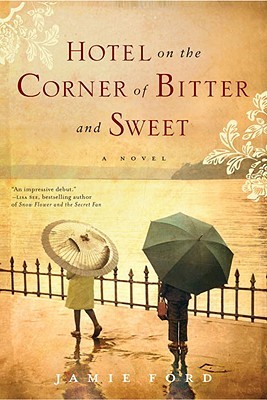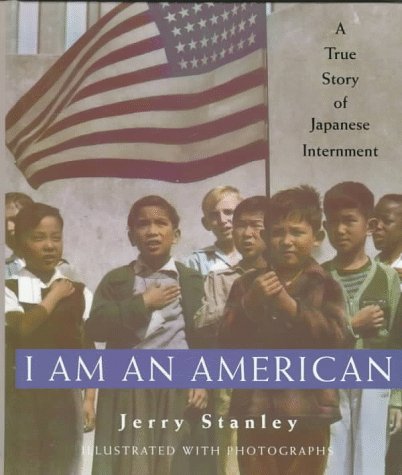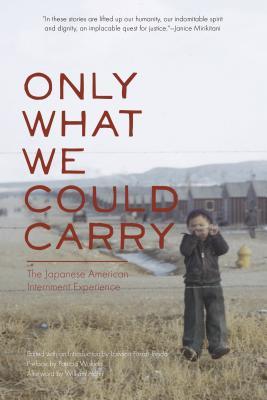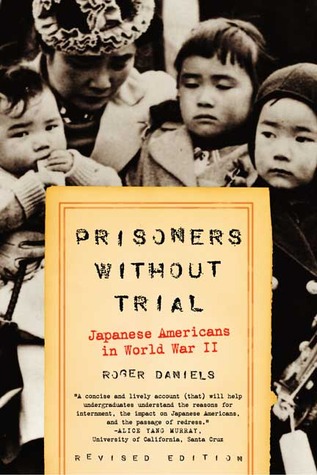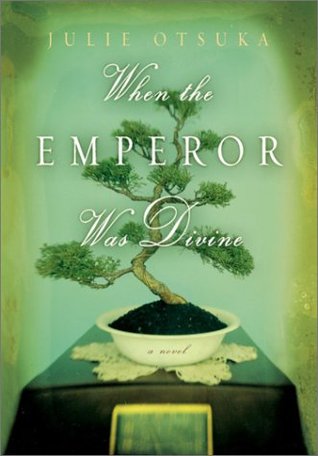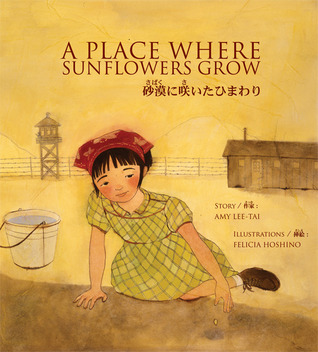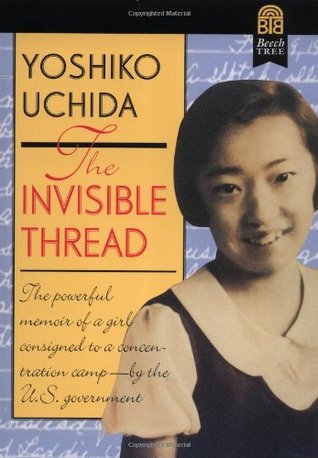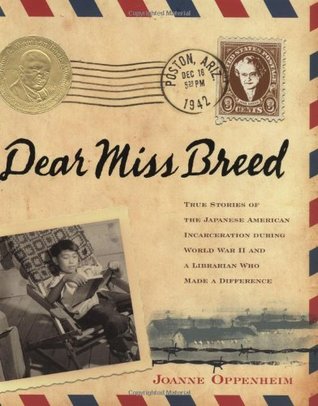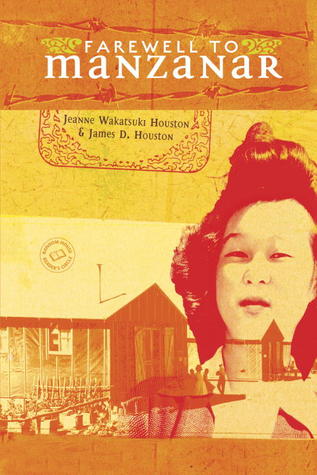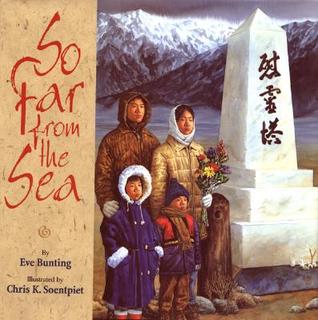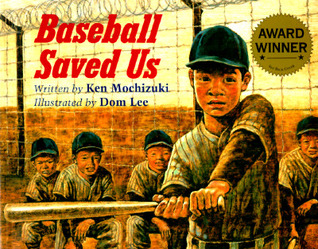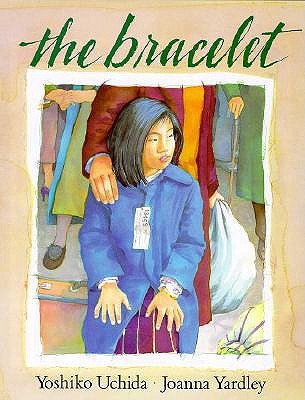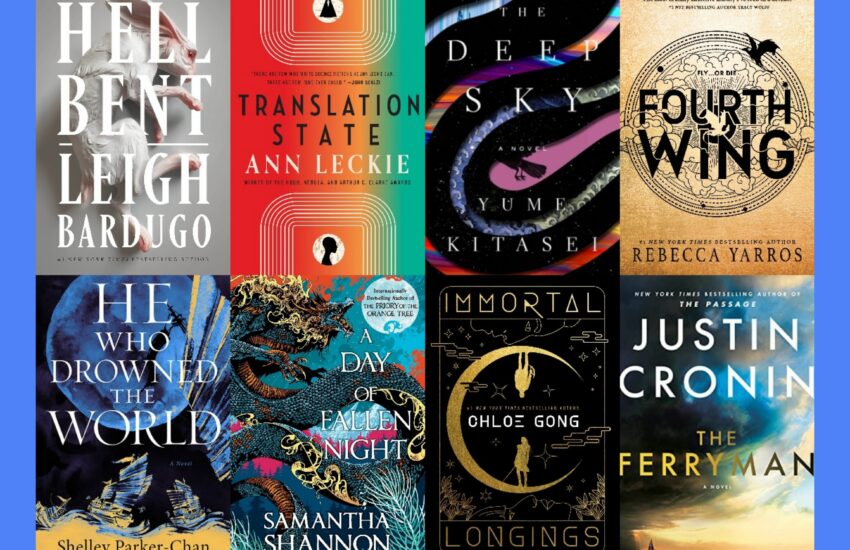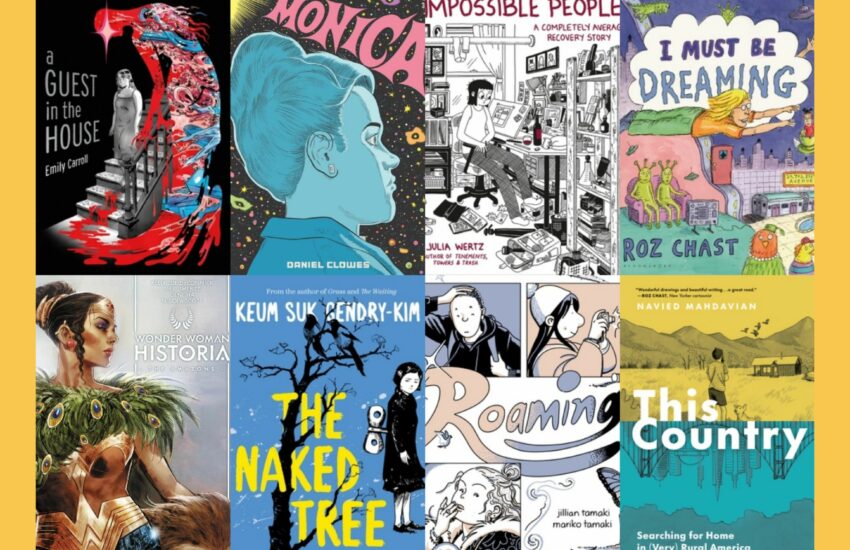The Best Books To Learn About Japanese-American Internment
“What are the best books about Japanese-American Internment?” We looked at 140 of the top books, aggregating and ranking them so we could answer that very question!
The below books are a mixture of nonfiction and fiction books about the Japanese-American Internment. The top 26 books, all appearing on 3 or more lists, are ranked below by how many times they appear. The remaining 100+ titles, as well as the book lists we used are in alphabetical order at the bottom of the page.
Happy Scrolling!
Top 26 Best Books To Learn About Japanese-American Internment
26 .) Citizen 13660 by Mine Okubo
Lists It Appears On:
- CaliSphere
- Goodreads
- PBS
Mine Okubo was one of over one hundred thousand people of Japanese descent – nearly two-thirds of whom were American citizens – who were forced into “protective custody” shortly after Pearl Harbor. Citizen 13660, Okubo’s graphic memoir of life in relocation centers in California and Utah, illuminates this experience with poignant illustrations and witty, candid text. Now available with a new introduction by Christine Hong and in a wide-format artist edition, this graphic novel can reach a new generation of readers and scholars.
25 .) Desert Exile: The Uprooting of a Japanese-American Family by Yoshiko Uchida
Lists It Appears On:
- Ardent Reader
- Goodreads
- PBS
“In the spring of 1942, shortly after the United States entered into war with Japan, the federal government initiated a policy whereby 110,000 persons of Japanese ancestry were rounded up and herded into camps. They were incarcerated without indictment, trial, or counsel – not because they had committed a crime, but simply because they resembled the enemy. There was never any evidence of disloyalty or sabotage among them, and the majority were American citizens. The government’s explanation for this massive injustice was military necessity.
Desert Exile tells the story of one family who lived through these sad years. It is a moving personal account by a woman who grew up in Berkeley and was attending the University of California when the war began.”
24 .) Fish for Jimmy by Katie Yamasaki
Lists It Appears On:
- No Time For Flash Cards
- Goodreads
- Library Thing
“For two boys in a Japanese-American family, everything changed when Japan bombed Pearl Harbor and the United States went to war. With the family forced to leave their home and go to an internment camp, Jimmy loses his appetite. Older brother Taro takes matters into his own hands and, night after night, sneaks out of the camp, and catches fresh fish for Jimmy to help make him strong again.
This affecting tale of courage and love is an adaptation of the author’s true family story.”
23 .) Impounded: Dorothea Lange and the Censored Images of Japanese American Internment by Linda Gordon
Lists It Appears On:
- Goodreads
- Kyuhoshi
- Washington Post
Censored by the U.S. Army, Dorothea Lange’s unseen photographs are the extraordinary photographic record of the Japanese American internment saga. This indelible work of visual and social history confirms Dorothea Lange’s stature as one of the twentieth century’s greatest American photographers. Presenting 119 images originally censored by the U.S. Army―the majority of which have never been published―Impounded evokes the horror of a community uprooted in the early 1940s and the stark reality of the internment camps.
22 .) Journey to Topaz: A Story of the Japanese American Incarceration by Yoshiko Uchida
Lists It Appears On:
- Am History
- Densho Blog
- Goodreads
Based on Yoshiko Uchida’s personal experiences, this is the moving story of one girl’s struggle to remain brave during the Japanese internment of World War II. In a bleak and dusty prison camp, eleven-year-old Yuki and her family experience both true friendship and heart-wrenching tragedy. Journey to Topazexplores the consequences of prejudice and the capacities of the human spirit.
21 .) Looking Like the Enemy: My Story of Imprisonment in Japanese American Internment Camps by Mary Matsuda Gruenewald
Lists It Appears On:
- Ardent Reader
- Goodreads
- Kyuhoshi
“The author at 16 years old was evacuated with her family to an internment camp for Japanese Americans, along with 110,000 other people of Japanese ancestry living on the West Coast. She faced an indefinite sentence behind barbed wire in crowded, primitive camps. She struggled for survival and dignity, and endured psychological scarring that has lasted a lifetime.
This memoir is told from the heart and mind of a woman now nearly 80 years old who experienced the challenges and wounds of her internment at a crucial point in her development as a young adult. She brings passion and spirit to her story. Like “”The Diary of Anne Frank,”” this memoir superbly captures the emotional and psychological essence of what it was like to grow up in the midst of this profound dislocation and injustice in the U.S. Few other books on this subject come close to the emotional power and moral significance of this memoir.”
20 .) Remembering Manzanar: Life in a Japanese Relocation Camp by Michael L. Cooper
Lists It Appears On:
- The Best Childrens Books
- Am History
- Goodreads
In this close look at the first relocation camp built for Japanese evacuees living on the West Coast after the bombing of Pearl Harbor, social historian Michael Cooper makes extensive use of the actual words—from diaries, journals, memoirs, and news accounts—of the people who were held behind barbed wire in the high California desert. Many were American citizens who felt betrayed by their country. They had to leave their jobs, their homes, and their friends and go live in crowded barracks, eat in noisy mess halls, and do without supplies or books for work or schooling. They showed remarkable bravery and resilience as they tried to lead normal lives, starting their own schools, playing baseball, attending Saturday night dances, and publishing their own newspaper. Archival photographs, some by Ansel Adams and Dorothea Lange, augment the informative text.
19 .) Silver Like Dust: One Family’s Story of America’s Japanese Internment by Kimi Cunningham Grant
Lists It Appears On:
- Ardent Reader
- Goodreads
- Kyuhoshi
“Kimi’s Obaachan, her grandmother, had always been a silent presence throughout her youth. Sipping tea by the fire, preparing sushi for the family, or indulgently listening to Ojichan’s (grandfather’s) stories for the thousandth time, Obaachan was a missing link to Kimi’s Japanese heritage, something she had had a mixed relationship with all her life. Growing up in rural Pennsylvania, all Kimi ever wanted to do was fit in, spurning traditional Japanese culture and her grandfather’s attempts to teach her the language.
But there was one part of Obaachan’s life that fascinated and haunted Kimi―her gentle yet proud Obaachan was once a prisoner, along with 112,000 Japanese Americans, for more than five years of her life. Obaachan never spoke of those years, and Kimi’s own mother only spoke of it in whispers. It was a source of haji, or shame. But what really happened to Obaachan, then a young woman, and the thousands of other men, women, and children like her?
From the turmoil, racism, and paranoia that sprang up after the bombing of Pearl Harbor, to the terrifying train ride to Heart Mountain, Silver Like Dust captures a vital chapter the Japanese-American experience through the journey of one remarkable woman and the enduring bonds of family.”
18 .) Snow Falling on Cedars by David Guterson
Lists It Appears On:
- Goodreads
- Wikipedia
- Library Thing
San Piedro Island, north of Puget Sound, is a place so isolated that no one who lives there can afford to make enemies. But in 1954 a local fisherman is found suspiciously drowned, and a Japanese American named Kabuo Miyamoto is charged with his murder. In the course of the ensuing trial, it becomes clear that what is at stake is more than a man’s guilt. For on San Pedro, memory grows as thickly as cedar trees and the fields of ripe strawberries–memories of a charmed love affair between a white boy and the Japanese girl who grew up to become Kabuo’s wife; memories of land desired, paid for, and lost. Above all, San Piedro is haunted by the memory of what happened to its Japanese residents during World War II, when an entire community was sent into exile while its neighbors watched. Gripping, tragic, and densely atmospheric, Snow Falling on Cedars is a masterpiece of suspense– one that leaves us shaken and changed.
17 .) Tallgrass by Sandra Dallas
Lists It Appears On:
- Goodreads
- Library Thing
- PaperBack Swap
“During Word War II, a family fnds life turned upside down when the government opens a Japanese internment camp in their small Colorado town. After a young girl is murdered, all eyes (and suspicions) turn to the newcomers, the interlopers, the strangers.
This is her town as Rennie Stroud has never seen it before. She has just turned thirteen and, until this time, life has pretty much been what her father told her it should be: predictable and fair. But now the winds of change are coming and, with them, a shift in her perspective. And Rennie will discover secrets that can destroy even the most sacred things.
Part thriller, part historical novel, Tallgrass is a riveting exploration of the darkest—and best—parts of the human heart.”
16 .) The Children of Topaz: The Story of a Japanese American Internment Camp by Michael O. Tunnell
Lists It Appears On:
- Am History
- PBS
- Goodreads
The diary of a third-grade class of Japanese-American children being held with their families in an internment camp during World War II.
15 .) The Journal of Ben Uchida Citizen 13559, Mirror Lake Internment Camp by Barry Denenberg
Lists It Appears On:
- Am History
- The Best Childrens Books
- Goodreads
Heartbreaking and humorous, this is the story of a twelve-year-old prisoner in one of America’s Japanese internment camps of World War II.
14 .) Thin Wood Walls by David Patneaude
Lists It Appears On:
- Densho Blog
- Goodreads
- Yalsa
Eleven-year-old Joe Hanada likes playing basketball with his best friend, Ray, writing plays and stories, and thinking about the upcoming Christmas holiday. But his world falls apart when Japanese planes bomb Pearl Harbor. His country goes to war. The FBI takes his father away. And neighbors and friends in his hometown near Seattle begin to suspect Joe, his family, and all Japanese Americans of spying for the enemy. When the government orders people of Japanese heritage living on the West Coast to move to internment camps, including Joe and his family, Joe turns to the journal his father gave him to record his thoughts and feelings.
13 .) Hotel on the Corner of Bitter and Sweet by Jamie Ford
Lists It Appears On:
- Goodreads
- Library Thing
- PaperBack Swap
- Wikipedia
“In the opening pages of Jamie Ford’s stunning debut novel, Hotel on the Corner of Bitter and Sweet, Henry Lee comes upon a crowd gathered outside the Panama Hotel, once the gateway to Seattle’s Japantown. It has been boarded up for decades, but now the new owner has made an incredible discovery: the belongings of Japanese families, left when they were rounded up and sent to internment camps during World War II. As Henry looks on, the owner opens a Japanese parasol.
This simple act takes old Henry Lee back to the 1940s, at the height of the war, when young Henry’s world is a jumble of confusion and excitement, and to his father, who is obsessed with the war in China and having Henry grow up American. While “scholarshipping” at the exclusive Rainier Elementary, where the white kids ignore him, Henry meets Keiko Okabe, a young Japanese American student. Amid the chaos of blackouts, curfews, and FBI raids, Henry and Keiko forge a bond of friendship–and innocent love–that transcends the long-standing prejudices of their Old World ancestors. And after Keiko and her family are swept up in the evacuations to the internment camps, she and Henry are left only with the hope that the war will end, and that their promise to each other will be kept.
Forty years later, Henry Lee is certain that the parasol belonged to Keiko. In the hotel’s dark dusty basement he begins looking for signs of the Okabe family’s belongings and for a long-lost object whose value he cannot begin to measure. Now a widower, Henry is still trying to find his voice–words that might explain the actions of his nationalistic father; words that might bridge the gap between him and his modern, Chinese American son; words that might help him confront the choices he made many years ago. “
12 .) I Am An American A True Story of Japanese Internment by Jerry Stanley
Lists It Appears On:
- Ardent Reader
- The Best Childrens Books
- Goodreads
- Library Thing
Illustrated with black-and-white photographs. Young Shi Nomura was among the 120,000 American citizens who lost everything when he was sent by the U.S. government to Manzanar, an interment camp in the California desert, simply because he was of Japanese ancestry.
11 .) Only What We Could Carry: The Japanese American Internment Experience by Lawson Fusao Inada
Lists It Appears On:
- Ardent Reader
- Goodreads
- Kyuhoshi
- PBS
“In the wake of wartime panic that followed the Japanese attack of Pearl Harbor, more than 100,000 Japanese Americans residing along the West Coast of the United States were uprooted from their homes and their communities and banished to internment camps throughout the country.
Through personal documents, art, and propaganda, Only What We Could Carry expresses through words, art, and haunting recollections, the fear, confusion and anger of the camp experience. The only anthology of its kind, Only What We Could Carry is an emotional and intellectual testament to the dignity, spirit and strength of the Japanese American internees.”
10 .) Prisoners Without Trial: Japanese Americans in World War II by Roger Daniels
Lists It Appears On:
- Ardent Reader
- PBS
- Goodreads
- Kyuhoshi
Part of Hill and Wang’s Critical Issues Series and well established on college reading lists, PRISONERS WITHOUT TRIAL presents a concise introduction to a shameful chapter in American history: the incarceration of nearly 120,000 Japanese Americans during World War II. With a revised final chapter and expanded recommended readings, Roger Daniels’s updated edition examines a tragic event in our nation’s past and thoughtfully asks if it could happen again.
9 .) When the Emperor Was Divine by Julie Otsuka
Lists It Appears On:
- Goodreads
- Library Thing
- PaperBack Swap
- Wikipedia
“On a sunny day in Berkeley, California, in 1942, a woman sees a sign in a post office window, returns to her home, and matter-of-factly begins to pack her family’s possessions. Like thousands of other Japanese Americans they have been reclassified, virtually overnight, as enemy aliens and are about to be uprooted from their home and sent to a dusty internment camp in the Utah desert.
In this lean and devastatingly evocative first novel, Julie Otsuka tells their story from five flawlessly realized points of view and conveys the exact emotional texture of their experience: the thin-walled barracks and barbed-wire fences, the omnipresent fear and loneliness, the unheralded feats of heroism. When the Emperor Was Divine is a work of enormous power that makes a shameful episode of our history as immediate as today’s headlines.”
8 .) A Place Where Sunflowers Grow by Amy Lee-Tai
Lists It Appears On:
- Am History
- Goodreads
- Library Thing
- No Time For Flash Cards
- The Best Childrens Books
Mari wonders if anything can bloom at Topaz, where her family is interned along with thousands of other Japanese Americans during World War II. The summer sun is blazingly hot, and Mari’s art class has begun. But it’s hard to think of anything to draw in a place where nothing beautiful grows. Somehow, glimmers of hope begin to surface under the harsh sun–in the eyes of a kindly art teacher, in the tender words of Mari’s parents, and in the smile of a new friend. Inspired by her family’s experiences, author Amy Lee-Tai has crafted a story rooted in one of America’s most shameful historical episodes–the internment of 120,000 Japanese Americans during World War II. The art schools which offered internees moments of solace and self-expression are a little known part of this history. Amy Lee-Tai’s gentle prose and Felicia Hoshino’s stunning mixed media images are a testimony to hope and how it can survive alongside even the harshest injustice.
7 .) The Invisible Thread by Yoshiko Uchida
Lists It Appears On:
- Goodreads
- The Best Childrens Books
- Wikipedia
- PaperBack Swap
- PBS
Growing up in California, Yoshi knew her family looked different from their neighbors. Still, she felt like an American. But everything changed when America went to war against Japan. Along with all the other Japanese-Americans on the West Coast, Yoshi’s family were rounded up and imprisoned in a crowded. badly built camp in the desert because they”looked like the enemy.” Yoshiko Uchida grew up to be an award-winning author. This memoir of her childhood gives a personal account of a shameful episode in American history.
6 .) Dear Miss Breed: True Stories of the Japanese American Incarceration During World War II and a Librarian Who Made a Difference by Joanne Oppenheim
Lists It Appears On:
- Library Thing
- Am History
- Goodreads
- Kyuhoshi
- The Best Childrens Books
- Yalsa
“A chronicle of the incredible correspondence between California librarian Clara Breed and young Japanese American internees during World War II.
In the early 1940’s, Clara Breed was the children’s librarian at the San Diego Public Library. But she was also friend to dozens of Japanese American children and teens when war broke out in December of 1941. The story of what happened to these American citizens is movingly told through letters that her young friends wrote to Miss Breed during their internment. This remarkable librarian and humanitarian served as a lifeline to these imprisoned young people, and was brave enough to speak out against a shameful chapter in American history.”
5 .) Farewell to Manzanar: A True Story of Japanese American Experience During and After the World War II Internment by Jeanne Wakatsuki Houston
Lists It Appears On:
- Kyuhoshi
- Library Thing
- Wikipedia
- Goodreads
- PaperBack Swap
- Yalsa
“Jeanne Wakatsuki was seven years old in 1942 when her family was uprooted from their home and sent to live at Manzanar internment camp–with 10,000 other Japanese Americans. Along with searchlight towers and armed guards, Manzanar ludicrously featured cheerleaders, Boy Scouts, sock hops, baton twirling lessons and a dance band called the Jive Bombers who would play any popular song except the nation’s #1 hit: “”Don’t Fence Me In.””
Farewell to Manzanar is the true story of one spirited Japanese-American family’s attempt to survive the indignities of forced detention . . . and of a native-born American child who discovered what it was like to grow up behind barbed wire in the United States.”
4 .) So Far From the Sea by Eva Bunting
Lists It Appears On:
- Am History
- Densho Blog
- Goodreads
- Library Thing
- No Time For Flash Cards
- The Best Childrens Books
Laura Iwasaki and her family are paying what may be their last visit to Laura’s grandfather’s grave. The grave is at Manzanar, where thousands of Americans of Japanese heritage were interned during World War II. Among those rounded up and taken to the internment camp were Laura’s father, then a small boy, and his parents. Now Laura says goodbye to Grandfather in her own special way, with a gesture that crosses generational lines and bears witness to the patriotism that survived a shameful episode in America’s history. Eve Bunting’s poignant text and Chris K. Soentpiet’s detailed, evocative paintings make the story of this family’s visit to Manzanar, and of the memories stirred by the experience, one that will linger in readers’ minds and hearts.
3 .) Baseball Saved Us by Ken Mochizuki
Lists It Appears On:
- Am History
- Densho Blog
- Goodreads
- Library Thing
- No Time For Flash Cards
- PaperBack Swap
- The Best Childrens Books
“Shorty and his family, along with thousands of Japanese Americans, are sent to an internment camp after the attack on Pearl Harbor. Fighting the heat and dust of the desert, Shorty and his father decide to build a baseball diamond and form a league in order to boost the spirits of the internees. Shorty quickly learns that he is playing not only to win, but to gain dignity and self-respect as well.
Baseball Saved Us is the ultimate rite of passage story. It will appeal again and again to readers who enjoy cheering for the underdog.”
2 .) The Bracelet by Yoshiko Uchida
Lists It Appears On:
- Am History
- Densho Blog
- Goodreads
- Library Thing
- No Time For Flash Cards
- PaperBack Swap
- The Best Childrens Books
Emi and her family are being sent to a place called an internment camp, where all Japanese-Americans must go. The year is 1942. The United States and Japan are at war. Seven-year-old Emi doesn’t want to leave her friends, her school, her house; yet as her mother tells her, they have no choice, because they are Japanese-American. For her mother’s sake, Emi doesn’t say how unhappy she is. But on the first day of camp, when Emi discovers she has lost her heart bracelet, she can’t help wanting to cry. “How will I ever remember my best friend?” she asks herself.
1 .) Weedflower by Cynthia Kadohata
Lists It Appears On:
- Am History
- Densho Blog
- Goodreads
- Library Thing
- The Best Childrens Books
- Wikipedia
- Yalsa
With remarkable insight and clarity, the Newbery Medal-winning author of Kira-Kira explores an important and painful topic through the eyes of a young Japanese-American girl living in California just as the Japanese bomb Pearl Harbor.
The 100+ Additional Best Books To Learn About Japanese Internment During WW2
| # | Book | Author | Lists |
| (Titles Appear On 2 Or More Lists) | |||
| 27 | A Boy No More | Harry Mazer | Am History |
| Library Thing | |||
| 28 | A Diamond in the Desert | Kathryn Fitzmaurice | Library Thing |
| Yalsa | |||
| 29 | A Fence Away from Freedom: Japanese Americans and World War II | Ellen Levine | Am History |
| PBS | |||
| 30 | And Justice for All | John Tateishi | Goodreads |
| PBS | |||
| 31 | Best Friends Forever: A World War II Scrapbook | Beverly Patt | Goodreads |
| Library Thing | |||
| 32 | By Order of the President: FDR and the Internment of Japanese Americans | Greg Robinson | Goodreads |
| PBS | |||
| 33 | Confinement & Ethnicity: An Overview of World War II Japanese American Relocation Sites | Jeffrey F. Burton, Mary M. Farrell, Florence B. Lord, & Richard W. Lord | PBS |
| CaliSphere | |||
| 34 | Imprisoned | Martin W. Sandler | Yalsa |
| PBS | |||
| 35 | Journey Home | Yoshiko Uchida | Am History |
| Goodreads | |||
| 36 | Justice At War | Peter Irons | Ardent Reader |
| PBS | |||
| 37 | Red Berries, White Clouds, Blue Sky | Sandra Dallas | Goodreads |
| Library Thing | |||
| 38 | Strangers From A Different Shore: A History of Asian Americans | Ronald Takaki | PBS |
| CaliSphere | |||
| 39 | Take What You Can Carry | Kevin C. Pyle | Densho Blog |
| Yalsa | |||
| 40 | The Art of Gaman: Arts and Crafts from the Japanese American Internment Camps 1942-1946 | Delphine Hirasuna | Goodreads |
| Kyuhoshi | |||
| 41 | The Buddha in the Attic | Julie Otsuka | Goodreads |
| Library Thing | |||
| 42 | The Japanese Lover | Isabel Allende | Goodreads |
| Library Thing | |||
| 43 | The Moved-Outers | Florence C. Means | Wikipedia |
| PaperBack Swap | |||
| 44 | Years of Infamy | Michi Weglyn | Goodreads |
| PBS | |||
| (Titles Appear On 1 List Each) | |||
| 45 | A Boy at War: A Novel of Pearl Harbor | Harry Mazer | Am History |
| 46 | A Buried Past II: A Sequel to the Annotated Bibliography of the Japanese American Research Project Collection | Compiled by Yuji Ichioka & Eiichiro Azuma | PBS |
| 47 | A Carp for Kimoko | Virginia Kroll | Am History |
| 48 | Aleutian Sparrow | Karen Hesse | The Best Childrens Books |
| 49 | Allegiance | Kermit Roosevelt III | Goodreads |
| 50 | An Enemy Among Friends | Kiyoaki Murata | PBS |
| 51 | Asian Americans: An Interpretive History | Sucheng Chan | CaliSphere |
| 52 | Barbed Wire Baseball | Marissa Moss | Goodreads |
| 53 | Before the War: Poems as they Happened | Lawson Inada | PBS |
| 54 | Blue Jay in the Desert | Marlene Shigakawa | PBS |
| 55 | Born Free and Equal | Wikipedia | |
| 56 | Changing Dreams and Treasured Memories: A Story of Japanese Americans in the Sacramento Region | Wayne Maeda | PBS |
| 57 | Colors of Confinement: Rare Kodachrome Photographs of Japanese American Incarceration in World War II | Kyuhoshi | |
| 58 | Crossing the Phantom River | James Masao Mitsui | PBS |
| 59 | Crystal City Internment Camp: 50th Anniversary Reunion | PBS | |
| 60 | Dash | Kir | Goodreads |
| 61 | Dear Miye: Letters Home from Japan, 1939-1946 | Mary Kimoto Tomita, Robert G. Lee (Translator) | PBS |
| 62 | Drawing the Line, Poems by Lawson Fusao Inada. | Lawson Fusao Inada. Coffee House Press | PBS |
| 63 | Dust of Eden | Mariko Nagai | Goodreads |
| 64 | Echo | Pam Muñoz Ryan | Goodreads |
| 65 | Encyclopedia of Japanese Descendents in the Americas | Akemi Kikumura-Yano | CaliSphere |
| 66 | Enemies: World War II Alien Internment | John Christgau | PBS |
| 67 | Exile Within: The Schooling of Japanese Americans 1941-1945 | Thomas James | PBS |
| 68 | Eyes of the Emperor | Graham Salisbury | Yalsa |
| 69 | Face of the Enemy, Heart of a Patriot: Japanese-American Internment Narratives | Ann Koto Hayashi | PBS |
| 70 | Flowers from Mariko | Rick Noguchi and Deneen Jenks | Densho Blog |
| 71 | Free to Die for Their Country: The Story of the Japanese American Draft Resisters During World War II | Eric L. Muller. University of Chicago Press | PBS |
| 72 | From a Three-Cornered World, New & Selected Poems. | James Masao Mitsui. University of Washington Press | PBS |
| 73 | From Our Side of the Fence: Growing Up in America’s Concentration Camps | Ed., Brian Komei Dempster | PBS |
| 74 | Gaijin: American Prisoner of War | Matt Faulkner | Library Thing |
| 75 | Generations and Identity: The Japanese American | Harry Kitano | CaliSphere |
| 76 | Ghostwritten | Isabel Wolff | Library Thing |
| 77 | Go for Broke: A Pictoral History of the Japanese American 100th Infantry Battalion and the 442d Regimental Combat Team | Chester Tanaka | PBS |
| 78 | Heroes Don’t Run: A Novel of the Pacific War | Harry Mazer | Am History |
| 79 | Home of the Brave | Allen Say | Library Thing |
| 80 | Honor by Fire: Japanese Americans at War in Europe and the Pacific | Lyn Crost | PBS |
| 81 | Identity Crisis of the Sansei and the Concentration Camp | Nobu Miyoshi | PBS |
| 82 | In Defense of Internment | Wikipedia | |
| 83 | Infamy: The Shocking Story of the Japanese American Internment in World War II | Kyuhoshi | |
| 84 | Issei and Nisei: The Internment Years | Daisuke Kitagawa | PBS |
| 85 | Japanese American Women: Three Generations 1890-1990 | Mei Nakano | PBS |
| 86 | Japanese Americans and World War II: Exclusion, Internment, and Redress | Donald Teruo Hata, et al | PBS |
| 87 | Japanese Americans: From Relocation to Redress | Roger Daniels | PBS |
| 88 | Jewel of the Desert: Japanese American Internment at Topaz | Sandra C. Taylor | PBS |
| 89 | Judgment Without Trial: Japanese American Imprisonment during World War II | Tetsuden Kashima | PBS |
| 90 | Just Americans: How Japanese Americans Won a War at Home and Abroad: The Story of the 100th Battalion/442d Regimental Combat Team in World War II, | Robert Asahina | Washington Post |
| 91 | Justice Delayed: The Record of the Japanese American Internment Cases | Peter Irons (Editor) | PBS |
| 92 | Legacy of Injustice : Exploring the Cross-Generational Impact of the Japanese American Internment | Donna K. Nagata | PBS |
| 93 | Life in a Japanese American Internment Camp | Diane Yancey | PBS |
| 94 | Lost and Found: Reclaiming the Japanese American Incarceration | Karen L. Ishizuka | Washington Post |
| 95 | Manzanar: Photographs by Ansel Adams | John Armor & Peter Wright | PBS |
| 96 | May Sky – There is Always Tomorrow: An Anthology of Japanese American Concentration Camp Kaiko Haiku | Compiled by Violet Kazue de Cristoforo. | PBS |
| 97 | Missing in Action | Dean Hughes | Library Thing |
| 98 | Morning Glory, Evening Shadow: Yamato Ichihashi and His Internment Writings, 1942-1945 | Ed., Gordon H. Chang | PBS |
| 99 | Music for Alice | Allen Say | Library Thing |
| 100 | My Friend the Enemy | J.B. Cheaney | Goodreads |
| 101 | My Six Years of Internment: An Issei’s Struggle for Justice | Rev. Yoshiaki Fukuda | PBS |
| 102 | Nisei Daughter | Monica Itoi Sone | Ardent Reader |
| 103 | Nisei Memories: My Parents Talk about the War Years | Paul Howard Takemoto | Goodreads |
| 104 | Nisei: The Quiet Americans | Bill Hosokawa | PBS |
| 105 | No-No Boy | Wikipedia | |
| 106 | Obasan | Joy Kogawa | Goodreads |
| 107 | One Family’s Experience in a Japanese American Internment Camp | Goodreads | |
| 108 | Our House Divided: Seven Japanese American Families in World War II | Tomi Kaizawa Knaefler | PBS |
| 109 | Paper Wishes | Lois Sepahban | Goodreads |
| 110 | Perfidia | James Ellroy | Goodreads |
| 111 | Personal Justice Denied: Report of the Commission on Wartime Relocation and Internment of Civilians | PBS | |
| 112 | Placing Memory: A Photographic Exploration of Japanese American Internment, | Todd Stewart | Washington Post |
| 113 | Prejudice, War and the Constitution: Causes and Consequences of the Evacuation of the Japanese Americans in World War II | Jacobus tenBroek, Edward N. Barnhart, & Floyd W. Matson | PBS |
| 114 | Reminiscing in Swingtime | George Yoshida | PBS |
| 115 | Righting a Wrong: Japanese Americans and the Passage of the Civil Liberties Act of 1988 | Leslie T. Hatamiya | PBS |
| 116 | Second Kinenhi: Reflections on Tule Lake | Tule Lake Committee | PBS |
| 117 | Serving Our Country: Japanese American Women in the Military during World War II, | Brenda L. Moore | Washington Post |
| 118 | Silent Honor | Danielle steel | PaperBack Swap |
| 119 | Stanley Hayami, Nisei Son | Joanne Oppenheim | Am History |
| 120 | Strawberry Days: How Internment Destroyed a Japanese American Community | David A. Neiwert | Goodreads |
| 121 | Sylvia & Aki | Winifred Conkling | Goodreads |
| 122 | The Bill of Rights and the Japanese American World War II Experience. | National Japanese American Historical Society and San Francisco Unified School District | PBS |
| 123 | The Eternal Spring of Mr. Ito | Sheila Garrigue | Am History |
| 124 | The Evacuation Diary of Hatsuye Egami. | Edited by Claire Gorfinkel. Intentional Productions | PBS |
| 125 | The Experience of Injustice: Health Consequences of the Japanese American Internment | Gwendolyn M. Jensen. UMI Dissertation Services | PBS |
| 126 | The Fences Between Us : the Diary of Piper Davis | Kirby Larson | Library Thing |
| 127 | The Kikuchi Diary: Chronicle from an American Concentration Camp. | Kikuchi, Charles | PBS |
| 128 | The Magic of Ordinary Days | Ann Howard Creel | Goodreads |
| 129 | The Spoilage | Dorothy Swaine Thomas & Richard S. Nishimoto 1946 | PBS |
| 130 | The Stubborn Twig: Three Generations in the Life of a Japanese American Family | Lauren Kessler | PBS |
| 131 | The Train to Crystal City: FDR’s Secret Prisoner Exchange Program and America’s Only Family Internment Camp During World War II | Jan Jarboe Russell | Goodreads |
| 132 | Through Innocent Eyes: Writing and Art from the Japanese American Internment | Vincent Tajiri | PBS |
| 133 | Tule Lake: From Relocation to Segregation | Harold Stanley Jacoby | PBS |
| 134 | Under the Blood Red Sun | Wikipedia | |
| 135 | Views from Within: The Japanese American Evacuation and Resettlement Study | Ed., Yuji Ichioka | PBS |
| 136 | War of the Eagles | Eric Walters | Goodreads |
| 137 | Whispered Silences: Japanese Americans and World War II | Gary Y. Okihiro, Joan Myers (Photographer) | PBS |
| 138 | Why She Left Us | Rahna Reiko Rizzuto. | PBS |
| 139 | Within the Barbed Wire Fence | Takeo Ujo Nakano | Ardent Reader |
| 140 | Words Do Matter: A Note on Inappropriate Terminology and the Incarceration of Japanese Americans | Roger Daniels | CaliSphere |
14 Best Books about Japanese Internment Sources/Lists
| Source | Article |
| Am History | OurStory: Life in a WWII Japanese American Internment Camp |
| Ardent Reader | BOOKS ABOUT JAPANESE INTERNMENT DURING WWII |
| CaliSphere | Library, Archival, and Museum Collections and Exhibit |
| Densho Blog | EIGHT ESSENTIAL JAPANESE AMERICAN HISTORY BOOKS FOR YOUNG READERS |
| Goodreads | Popular Japanese Internment Books |
| Kyuhoshi | 10 Heartbreaking Books about Japanese American Internment Camps |
| Library Thing | Most often tagged Japanese internment camps |
| No Time For Flash Cards | CHILDREN’S BOOKS ABOUT JAPANESE INTERNMENT CAMPS |
| PaperBack Swap | Japanese Internment Camp Books |
| PBS | Books |
| The Best Childrens Books | Books on the Japanese Internment Camps |
| Washington Post | Five Books on the Japanese American Internment |
| Wikipedia | Japanese-American internment books |
| Yalsa | The Japanese American Incarceration in Youth Literature |
